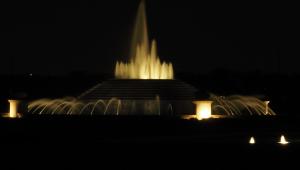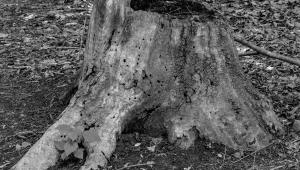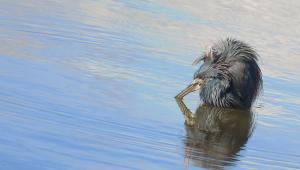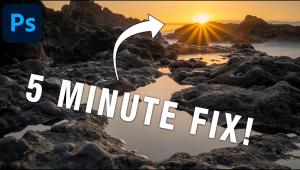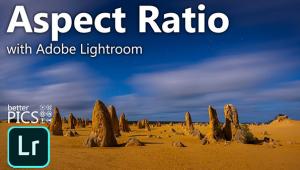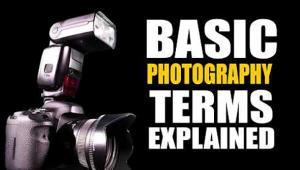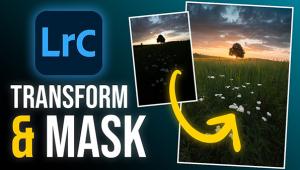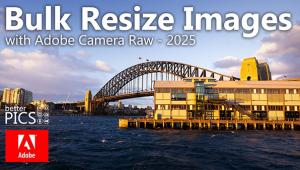Copyright And Photography
Protecting Your Creative Investment
Photography is a wide-ranging field that engenders passion in its practitioners,
and like all great forms of expression creates opinions formed through experience
and reflection. In its early days one of the great debates was: Is Photography
Art? This was the subject of many essays and heated discussions among players
and spectators. Today, issues such as film vs. digital, format choices, the
validity of computer generated images, photography as exploitation or revealer,
and even the merits of ink jet vs. silver prints cause similar debate. We are
opening this department up to readers, manufacturers, and retailers--in
short, everyone who lives and breathes photography and who has an opinion about
anything affecting imaging today.
Here's how to get involved: write us an e-mail at editorial@shutterbug.com
or send us a letter with a proposed topic and a synopsis of your idea. Once
approved, we'll ask you to send us about 500-1000 words on the subject
chosen. The idea here is not to push any product or wave any flag, but to create
discussion about photo and imaging topics of the day. We reserve the right to
edit whatever you send in, although we will never edit intention or opinion
but only for length and, hopefully, for clarity. We reserve the right to publish
your work on our website as well, so you can join the archives and be a resource
for opinion for years to come.
So, get thinking and writing and share your Point of View.
--George Schaub
Although commercial photography existed as early as 1850, federal copyright
protection for photographs was not enacted until 1865, the year the Civil War
ended. That date is not merely coincidence--Mathew Brady's famous
Civil War photographs were influential in prompting Congress to recognize protection
for photographs. At the same time, photography presented one of the first technological
challenges to copyright law, as illustrators and artists questioned whether
the making of photographs was an artistic endeavor that should be entitled to
protection. They argued that photography involved only a mechanical process,
merely "pushing a button."
In 1884, the Supreme Court resolved this issue in Burrows-Giles Lithographic
Co. v. Sarony, a case involving a famous photograph of Oscar Wilde. The Court
ruled that a photographer's creative decisions about the setting, angle,
lighting, background, subject matter, and other aspects of composing a photograph
easily meet the required standard for originality. In fact, nearly 100 years
later the Supreme Court reaffirmed the originality standard established in the
Burrows-Giles photography case as the standard for all copyrighted works. Note
also that the Supreme Court has made clear that works created for advertising
purposes are no less entitled to copyright protection than purely artistic works.
The current Copyright Act continues explicit protection of photographs as a
type of "pictorial, graphic, and sculptural works." Copyright protection
is automatic--it subsists as soon as a photograph is "fixed"
in a tangible form. For example, once the image is recorded on film or stored
in the memory of a digital camera, then copyright protection applies to it.
There is no requirement that the photographer register the work or undertake
any other formality to enjoy the benefits of copyright protection, such as licensing
the work to others. Registration of a copyright with the US Copyright Office,
however, provides several important benefits. First, it provides the public
with notice of the author's claim to copyright. Second, registration before
an infringement provides the author with additional remedies in litigation,
including the possibility of obtaining statutory damages and attorney's
fees. Third, a copyright owner cannot initiate a lawsuit for a US work until
he or she has registered the copyright in that work. Finally, copyright registration
is relatively inexpensive--generally about $30 per registration--and
the Copyright Office recently created a new procedure for photographers to register
groups of their published photographs with a single application, making it even
easier and less expensive. Information on registration can be found at the Copyright
Office's website, www.copyright.gov.
The rise of digital technologies makes it even more important today that photographers
understand how copyright protects their works and how it can be used to protect
the economic value of their photographs. Gone are the days when the physical
limitations and expense of copying photographs gave photographers a fair amount
of protection against infringement of
their copyright.
Today any individual with a computer, scanner, and Internet connection can cheaply
and easily copy, distribute, and even alter a photographic work. Copyright can
be an effective means to control such activity and obtain redress when it occurs.
In addition, the recent amendments to the Copyright Act provide legal support
for a photographer who might use technological protection measures such as encryption
to protect digital versions of their works by giving the photographer remedies
against those who attempt to circumvent those measures.
Today's copyright law provides invaluable tools for the photographer seeking
to maximize economic return from their works. It is imperative in this age of
rapid technological change that the photographer understand what copyright offers
and explore how it
can be used to protect and enhance the commercial exploitation of their photographs.
Who Is APA?
The Advertising Photographers of America (APA) is a trade organization that
represents many of the industry's best-known photographic artists. For
the past 20 years, APA has been vocal in advocacy efforts and has strived to
educate photographers on business practices, ethics, and professional standards.
Committed to preserving and enhancing the profession, APA has been a strong
advocate on behalf of its membership and the entire photographic community,
working to resolve issues and problems in the industry by working with local
and state governments on issues such as taxes and employment concerns. Efforts
have also been made to support changes in copyright statutes and regulations.
In the area of contracts and purchase orders, APA has worked to advance fair
and equitable terms, and its efforts have benefited the entire photographic
community. For details on how to join APA, visit www.apanational.com.
Jule L. Sigall is the Associate Register for Policy and International Affairs with the US Copyright Office. The Advertising Photographers of America and the US Copyright Office have worked together in order to help educate photographers about copyright law. For more information about the APA, visit www.apanational.com.





